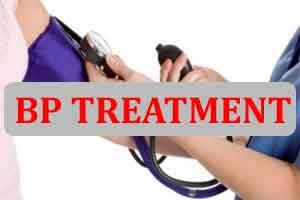- Home
- Editorial
- News
- Practice Guidelines
- Anesthesiology Guidelines
- Cancer Guidelines
- Cardiac Sciences Guidelines
- Critical Care Guidelines
- Dentistry Guidelines
- Dermatology Guidelines
- Diabetes and Endo Guidelines
- Diagnostics Guidelines
- ENT Guidelines
- Featured Practice Guidelines
- Gastroenterology Guidelines
- Geriatrics Guidelines
- Medicine Guidelines
- Nephrology Guidelines
- Neurosciences Guidelines
- Obs and Gynae Guidelines
- Ophthalmology Guidelines
- Orthopaedics Guidelines
- Paediatrics Guidelines
- Psychiatry Guidelines
- Pulmonology Guidelines
- Radiology Guidelines
- Surgery Guidelines
- Urology Guidelines
Directly observed BP treatment effective in resistant hypertension: JAMA

Nonadherence to Blood Pressure (BP) lowering drug regimens high among referred patients with apparent treatment-resistant hypertension and regular assessment of adherence to blood pressure (BP)-lowering drugs, as well as directly observed therapy (DOT), may be helpful for resolving treatment-resistant hypertension in a subset of patients. The study has been published in JAMA.
Among apparent treatment-resistant hypertension patients, nonadherence to the drug is commonly noted. There are few tests that determine nonadherence to therapy among patients such as Pharmacy refill data, the Morisky scale, and pill counts. This study aimed to assess the contribution of nonadherence to BP–lowering drugs undetected by these tests by evaluating the association of directly observed therapy (DOT) with treatment adherence in patients with apparent treatment-resistant hypertension.
This prospective observational cohort study was performed at a specialized hypertension center and was approved by the Ottawa Health Sciences Research Ethics Research Board. Adults (aged >18 years) with apparent treatment-resistant hypertension, defined as daytime mean systolic BP of 135 mm Hg or greater on 24-hour ambulatory blood pressure monitoring (ABPM) (SpaceLabs Healthcare), who were receiving 3 or more BP-lowering drugs were eligible. Adherence to prescribed BP-lowering drugs was assessed before enrollment with use of standard questioning by a hypertension clinic nurse, review of pharmacy filling records for the past 6 months, and pill count. Only patients for whom there was complete concordance with pharmacy records, pill count, and treatment regimen were enrolled. Patients who provided written consent underwent DOT, with a 1 month follow-up.4 On the day of DOT, prescribed BP-lowering drugs were administered by a nurse, and the BP response was monitored until peak BP effect was reached. A 24-hour ABPM was performed immediately after the peak effect of treatment was reached and again at 1 month. The primary outcome was the proportion of participants with daytime mean systolic BP less than 135 mm Hg on 24-hour ABPM after DOT, and the secondary outcome was this proportion at 1 month.
The key findings were:
- A total of 60 consecutive patients were enrolled in the study, and after exclusion of those who withdrew consent, did not attend DOT, or missed subsequent ABPM, 48 par.
- Participants completed this study for the primary outcome and 46 for the secondary outcome.
- After DOT, daytime systolic BP remained 135 mm Hg or greater in 34 of 48 patients (71%) who experienced a mean (SD) decrease in systolic BP of 3 (10) mm Hg.
- In contrast, in 14 participants (29%), treatment-resistant hypertension resolved and systolic BP decreased by 26 (20) mm Hg.
- This proportion was are similar at 1 month in 14 of 46 patients (30%) who no longer had treatment-resistant hypertension.
To conclude the study the authors wrote: " The results suggest that nonadherence to BP lowering drug regimens is high among referred patients with apparent treatment-resistant hypertension, even among those who said they were adherent on questioning before DOT, had pristine pharmacy filling records, and had accurate pill counts."
For more reference, click on the link
doi:10.1001/jamainternmed.2019.1455

Disclaimer: This site is primarily intended for healthcare professionals. Any content/information on this website does not replace the advice of medical and/or health professionals and should not be construed as medical/diagnostic advice/endorsement or prescription. Use of this site is subject to our terms of use, privacy policy, advertisement policy. © 2020 Minerva Medical Treatment Pvt Ltd